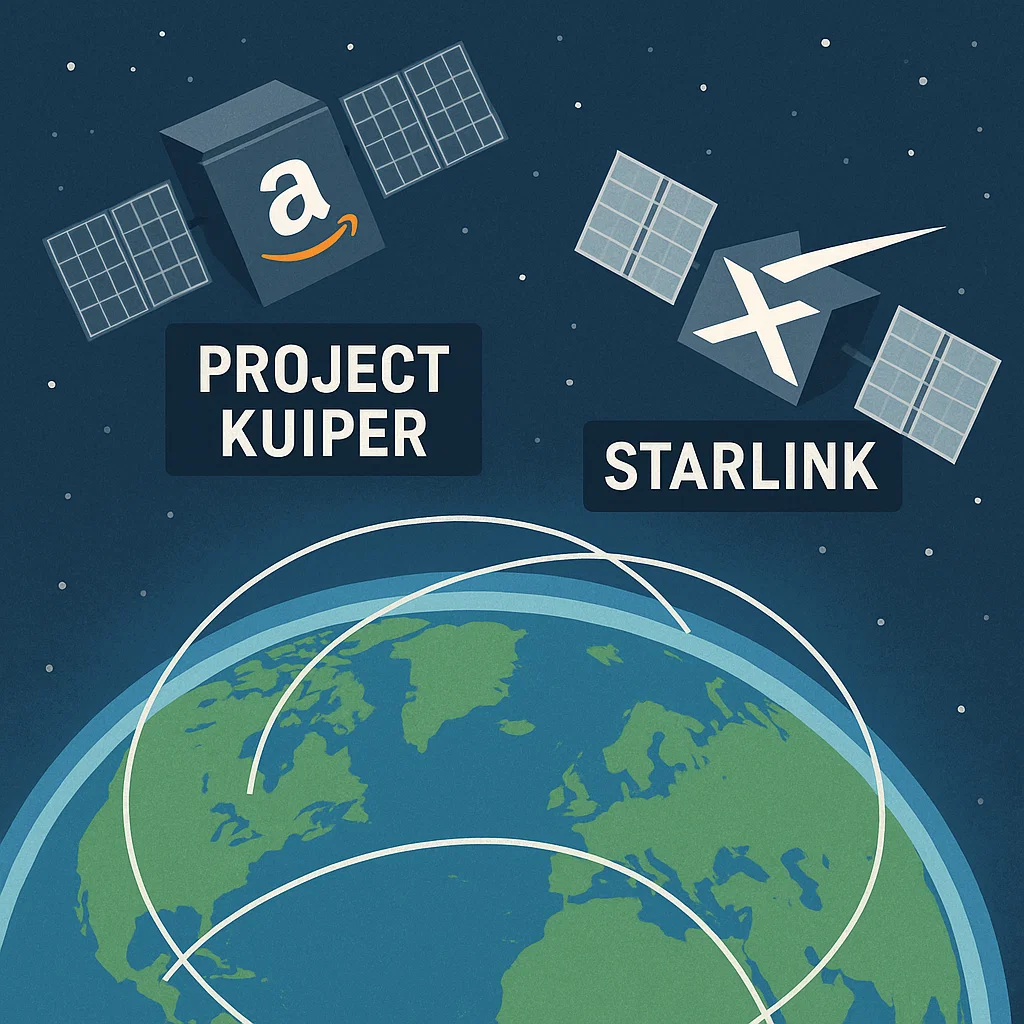
Amazon’s Project Kuiper is rapidly progressing in its mission to revolutionize satellite internet services. Despite having just over 100 satellites in orbit, the company’s ambition to challenge SpaceX’s Starlink has already made considerable strides. As of late 2025, Project Kuiper will begin operations in five critical markets: Canada, France, Germany, the UK, and the US. With this, Project Kuiper aims to deliver high-speed satellite internet that rivals the performance of Starlink.
What Is Project Kuiper?
Launched in 2018, Amazon’s Project Kuiper aims to provide global high-speed internet through a network of satellites. With more than 100 satellites already deployed in orbit, Kuiper is poised to offer connectivity in remote and underserved areas, giving users across the world the ability to connect with speeds comparable to existing terrestrial internet services.
Expanding to Five Markets by 2026
Ricky Freeman, President of Government Solutions for Project Kuiper, shared insights into the company’s upcoming milestones at the World Space Business Week conference in Paris. According to Freeman, Amazon is set to serve five countries—Canada, France, Germany, the UK, and the US—by the end of Q1 2026.
Despite Amazon not disclosing which customers will be first to access this service, it is clear that Kuiper’s satellite service will begin providing internet to enterprise-grade clients and beta users during the early months of 2026. This launch will directly compete with Starlink, which has dominated the satellite internet market since its own launch.
To stay updated on satellite technology, you can visit SpaceX’s Starlink updates.
The Kuiper Satellite Network and Service Plans
Project Kuiper’s satellite network is still in its early stages. With only 102 satellites in orbit as of now, the Kuiper network needs more satellites to ensure robust global coverage. As of 2025, Amazon expects to reach a total of 200 satellites in orbit, with plans for 3,200 satellites by 2026.
Amazon is confident in its technology, as demonstrated during an earlier showcase where Kuiper achieved a 1,280 Mbps download speed during a demo for an enterprise terminal. This is far faster than most other satellite internet services available today. While standard Kuiper dishes will provide speeds of 400 Mbps, this is comparable to Starlink’s current offerings, with both services aiming to provide fast, reliable satellite internet.
The Competitive Edge: Starlink vs. Kuiper
SpaceX’s Starlink is still the leading satellite internet provider, offering beta services since 2020 with over 800 satellites in orbit. However, Project Kuiper’s entry into the market will offer a formidable competitor, especially considering Amazon’s ability to leverage its global infrastructure and massive consumer base.
Project Kuiper aims to offer high-speed internet with greater coverage and lower latency than Starlink. To achieve this, Amazon will need to launch additional satellites and ensure that the network can scale efficiently. According to Freeman, the company plans to deploy hundreds more satellites in the near future to meet demand and capacity needs.
Regulatory Pressure and Challenges Ahead
One of the most pressing concerns for Amazon is its regulatory obligations. The Federal Communications Commission (FCC) requires Amazon to launch at least half of its planned satellites by July 2026. If this milestone isn’t reached, Amazon could risk losing FCC clearance to operate its satellite network. While Amazon could apply for an extension, meeting this deadline is critical for its ambitious goals.
In addition, Amazon is also facing stiff competition from SpaceX, which is already providing satellite internet services to users worldwide. However, Kuiper has a significant advantage in Amazon’s robust infrastructure, which can be leveraged for easier global expansion.
The Future of Satellite Internet: Project Kuiper’s Vision
The launch of Project Kuiper represents a major shift in the satellite internet industry, as Amazon works to democratize access to high-speed connectivity. With ongoing launches, technological advancements, and increased global coverage, Project Kuiper will play a key role in shaping the future of internet access for individuals, businesses, and industries worldwide.
For those interested in emerging satellite technologies, we recommend exploring NASA’s satellite communications research for deeper insights into this sector.